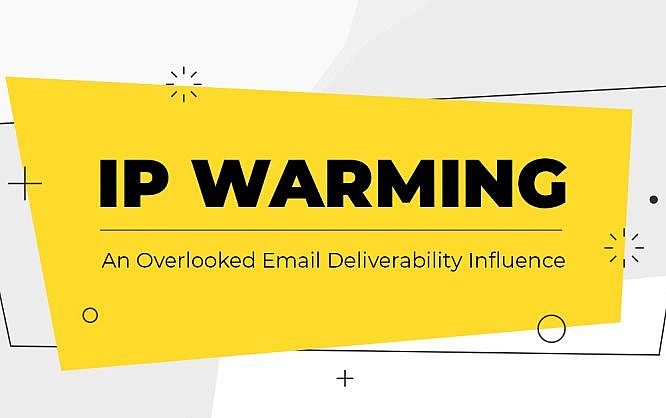IP Warming – An Overlooked Email Deliverability Influence

For many marketers, emails are the lifeline for most marketing efforts. Every SPAM complaint, unsubscribe, or bounce has an impact on the current ROI as well as on the sender’s reputation which affects the ROI of the future campaigns.
Yet the sender reputation, that you accumulate over the period of multiple email campaigns, is only restricted to the IP that you use to send the emails. As soon as you change your IP address, you need to build your sender reputation again.
If you are wondering “how does this concern me?”, this article is a must-read for you if you satisfy the following conditions:
- You use an email sending provider (ESP) to send emails.
- You are considering migrating to a better ESP.
- You have the curiosity to learn about behind the scene email marketing.
What is Sender Reputation? What Relation Does an IP Address Have With it?
Emails are the digital replication of the physical letters that you send via post. Just like in the case of physical letters, you have a sender IP address, receiver IP address, ESP (Sender side postbox), and ISP filters (receiver side postbox). Every email that is received in the subscriber’s inbox is checked by the ISP filter for SPAM related content. The sender’s reputation informs the ISP filters that the emails sent from a specific IP address are authentic and non-spamming. When you send an email using an ESP, you utilize their dynamic range of IP address to send emails.
What is IP Warming? When to do so?
When you migrate from an ESP to another, the dynamic range of IP addresses used to send emails will change. This could raise red flags at the ISP end, if you continue to send the same amount of emails from the new ESP as you did with the older one. The ISP would suspect the new IP address to be spam and restrict the number of emails being delivered successfully to the recipient’s inbox.
IP warming is a process where you systematically ramp up the email volume you send from the new IP address. It is generally done when you either migrate ESPs or shift to using a static IP to send emails & it takes around 4-8 weeks to accomplish maximum deliverability rate & sender reputation.
Wrap Up
Following the general email marketing best practices is not enough to land your emails in the inbox. You need to also maintain a good sender reputation and periodically measure the email deliverability. While planning an ESP migration, it is better to send a small volume of most engaging emails from the new IP address and gradually shifting the entire email sending capacity over a duration of a few weeks.
To learn more about IP warming, here's an infographic by Email Uplers: Smart IP Warming- The First Stride of Email Deliverability.
Bonus: The infographic also has an insightful ebook along with it.

Creator, Kevin George is Head of Marketing at Email Uplers, one of the fastest-growing custom email design and coding companies, and specializes in crafting professional email templates, PSD to HTML email conversion and free responsive HTML email templates in addition to providing email automation, campaign management, and data integration & migration services.
